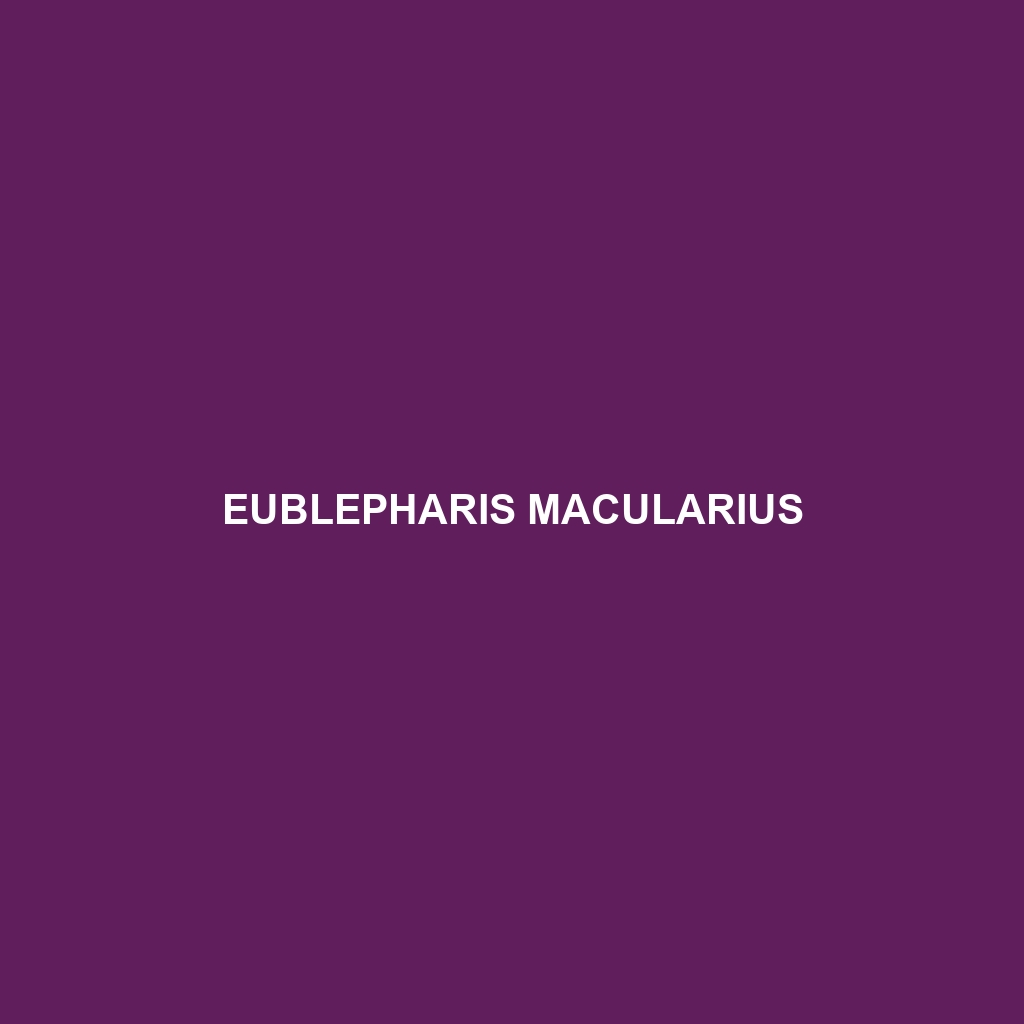Common Name
Eublepharis macularius
Scientific Name
Eublepharis macularius
Habitat
Eublepharis macularius, commonly known as the leopard gecko, is primarily found in the arid regions of South Asia, including parts of Afghanistan, Pakistan, India, and Nepal. These creatures thrive in a range of habitats from dry desert areas, rocky hills, and scrublands to semi-arid grasslands. The climate they inhabit is predominantly warm, often characterized by significant temperature fluctuations between day and night. The leopard gecko’s preferred environment typically consists of sandy substrates that facilitate burrowing, allowing them to escape the harsh daytime heat. Their ability to adapt to various habitats—such as savannas and temperate forests—demonstrates their resilience and ecological versatility.
Physical Characteristics
The leopard gecko is a medium-sized lizard, generally measuring between 7 and 10 inches (18 to 25 cm) in length. Characterized by its vibrant yellow and black spotted pattern, Eublepharis macularius exhibits significant color variations depending on the locality and breeding lines, including traits like leucism and albinism. The body is robust with a distinctive broad snout, which aids in foraging. Notably, these geckos possess movable eyelids—unlike many other lizards—allowing them to blink and clear debris from their eyes easily. Another key feature is their prehensile tail, which serves as a fat storage organ, enabling survival during periods of food scarcity.
Behavior
Eublepharis macularius exhibits primarily nocturnal behavior, making them active during the cooler night hours to hunt and forage for food. They are solitary creatures, often coming together only during the mating season. Social interactions are limited, and they utilize a range of vocalizations, body postures, and color changes for communication. Leopard geckos are known for their unique defense mechanism; when threatened, they can drop their tail to distract predators, allowing them to escape. Their mating rituals involve elaborate courtship displays, where males showcase their vibrant colors and may perform head-bobbing behaviors to attract females.
Diet
The leopard gecko is primarily an insectivore, feeding on a variety of insects such as crickets, mealworms, and waxworms. They have a keen sense of sight that aids in their hunting, especially at night. Their feeding patterns include ambush tactics, waiting for prey to come within striking distance. Occasionally, they may consume small vertebrates, making them opportunistic feeders. This dietary flexibility allows leopard geckos to thrive in their natural environments, as they are able to adjust their eating habits based on food availability.
Reproduction
The reproductive cycle of Eublepharis macularius typically occurs in spring and summer, with females laying clutches of one to three eggs in sandy burrows. The gestation period lasts about 40-60 days, during which the eggs are incubated in warm, humid conditions. The temperature during incubation can influence the sex of the hatchlings. Upon hatching, the young geckos are independent and venture out to fend for themselves immediately. Parental care is absent, as the female will only nest and abandon the eggs, showcasing a typical reptilian reproductive strategy.
Conservation Status
The conservation status of Eublepharis macularius is currently classified as Least Concern according to the IUCN Red List. Their wide distribution and adaptability to various environments have protected them from immediate threats. However, habitat destruction due to agricultural expansion and illegal pet trade poses significant challenges to their populations. Conservation efforts focus on habitat preservation and legal protections to mitigate these threats, ensuring leopard geckos can continue to thrive in the wild.
Interesting Facts
Eublepharis macularius has gained popularity as a pet due to its manageable size, docile temperament, and ease of care. Interestingly, leopard geckos exhibit a unique reproductive phenomenon known as “temperature-dependent sex determination,” where the temperature during the embryonic development influences the sex of the hatchlings. Furthermore, they can live up to 20 years in captivity, making them a long-term companion for reptile enthusiasts. Their ability to regenerate their tails after losing them adds to their fascinating biological characteristics.
Role in Ecosystem
This structured HTML format provides a comprehensive overview of the leopard gecko, covering aspects such as habitat, behavior, diet, reproduction, conservation status, interesting facts, and ecological roles, making it both informative and SEO-optimized.
